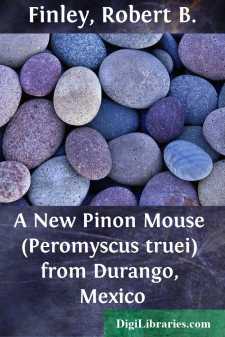Categories
- Antiques & Collectibles 13
- Architecture 36
- Art 48
- Bibles 22
- Biography & Autobiography 816
- Body, Mind & Spirit 145
- Business & Economics 28
- Children's Books 17
- Children's Fiction 14
- Computers 4
- Cooking 94
- Crafts & Hobbies 4
- Drama 346
- Education 58
- Family & Relationships 59
- Fiction 11834
- Foreign Language Study 3
- Games 19
- Gardening 17
- Health & Fitness 34
- History 1378
- House & Home 1
- Humor 147
- Juvenile Fiction 1873
- Juvenile Nonfiction 202
- Language Arts & Disciplines 89
- Law 16
- Literary Collections 686
- Literary Criticism 179
- Mathematics 13
- Medical 41
- Music 40
- Nature 179
- Non-Classifiable 1768
- Performing Arts 7
- Periodicals 1453
- Philosophy 66
- Photography 2
- Poetry 897
- Political Science 203
- Psychology 45
- Reference 154
- Religion 516
- Science 126
- Self-Help 85
- Social Science 82
- Sports & Recreation 34
- Study Aids 3
- Technology & Engineering 59
- Transportation 23
- Travel 463
- True Crime 29
Our website is made possible by displaying online advertisements to our visitors.
Please consider supporting us by disabling your ad blocker.
A New Pinon Mouse (Peromyscus truei) from Durango, Mexico
by: Robert B. Finley
Description:
Excerpt
The extensive collection of Mexican mammals made by Mr. J. R. Alcorn for the University of Kansas Museum of Natural History contains fourteen piñon mice from lava rocks eight miles northeast of the city of Durango, Mexico. These mice are all much darker than the piñon mice, Peromyscus truei gentilis, of adjoining areas in Durango and Zacatecas and show a superficial resemblance to the widespread P. t. gratus which occurs 450 miles to the southeast. Morphological differences from P. t. gratus, as well as geographic considerations (see remarks), make desirable the recognition of the lava-dwelling piñon mice from Durango as a distinct subspecies.
All specimens examined of subspecies compared with the series of piñon mice from northeast of Durango are in the University of Kansas Museum of Natural History. Capitalized color names and designators are of Maerz and Paul, A Dictionary of Color, McGraw Hill Book Co., New York, 1930.
I wish to acknowledge generous financial aid from the Kansas University Endowment Association which made possible the field work by Mr. Alcorn in Mexico.
This heretofore unknown subspecies is characterized below and may be known as:
Peromyscus truei erasmus subsp. nov.
Type.—Mus. Nat. Hist., Univ. Kansas, no. 34417, young adult female, skin and skull; from eight miles northeast of Durango, 6200 feet, Durango, Mexico; collected 16 August 1949 by J. R. Alcorn, original number 10255.
Range.—Known only from the type locality.
Diagnosis.—Upper parts dark brownish gray (Smoke Brown, 16 A 2, to Biskra, 16 A 12), darkest between ears; lower sides suffused with dull orange buff (13 H 9 to 12 H 9); dark eye ring and black spot at base of vibrissae conspicuous; ears 95 to 100 per cent as long as hind foot; bullae round, greatly inflated; interparietal large, anterior margin curved or slightly sinuous, not bulging strongly forward laterally; rostrum short; nasals broad; braincase high and full; incisive foramina slightly pointed anteriorly; molars small, as in P. t. gentilis.
Measurements.—Measurements of 3 males and mean and extreme measurements of 11 females, all from the type locality, are, respectively, as follows: total length, 192, 188 (incomplete), 196 (incomplete), 193 (188-209); length of tail, 102, 97 (broken), 97 (broken), 101 (94-114); length of hind foot, 22, 23, 23, 22.5 (22-23); length of ear, from notch, in flesh, 21, 22, 23, 21.5 (20-23); greatest length of skull, 27.4, 27.7, 27.9, 27.3 (26.5-28.3); basilar length, 20.2, 21.0, — (broken), 20.4 (19.6-21.2); greatest breadth of braincase, 12.8, 12.8, 13.3, 12.85 (12.4-13.4); least interorbital breadth, 4.4, 4.6, 4.6, 4.41 (4.2-4.6); length of nasals, 10.1, 10.3, 10.9, 10.3 (9.8-11.1); diastema, 6.6, 7.0, 7.1, 6.78 (6.3-7.2); length of incisive foramina, 5.6, 5.9, 6.0, 5.77 (5.5-6.0); length of palatal bridge, 3.8, 3.9, —, 3.96 (3.8-4.3); postpalatal length, 9.9, —, —, 9.7 (9.2-10.4); alveolar length of maxillary tooth-row, 4.1, 4.1, 4.4, 4.2 (4.1-4.4). All measurements are in millimeters.
Measurements of the type.—Total length, 189; length of tail, 95; length of hind foot, 22; length of ear, from notch (in flesh), 21; greatest length of skull, 26.9; basilar length, 20.3; greatest breadth of braincase, 13.0; least interorbital breadth, 4.4; length of nasals, 10.1; diastema, 6.6; length of incisive foramina, 5.5; length of palatal bridge, 3.9; postpalatal length, 9.8; alveolar length of maxillary tooth-row, 4.2.
Comparisons.—From Peromyscus truei gentilis (specimens from 5 mi. N Durango, Durango; 4 mi. W Durango, Durango; and 8 mi. N & 1 mi. W Sombrerete, Zacatecas), the subspecies of the surrounding region, P....



